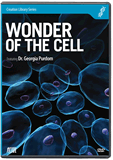
Life Almost Created in a Lab
The media went wild this week over the “almost” creation of life in the lab.
News Source
- LiveScience: “Life As We Know It Nearly Created in Lab”
Researchers at the Scripps Research Institute have created something “tantalizingly close” to life’s origin, asserts LiveScience editorial director Robert Roy Britt. It’s not life, the researchers caution, but it’s nonetheless fueling the hopes of evolutionists that life could have evolved spontaneously.
It’s not life, the researchers caution.
The scientists synthesized RNA enzymes that are able to replicate themselves indefinitely—“immortalized molecular information,” say the researchers.1 Next, they added different batches of the RNA enzymes together and let them compete for raw materials. Mutations occurred, and “the resulting recombinant enzymes also were capable of sustained replication, with the most fit replicators growing in number to dominate the mixture.”
That sounds exactly like what Darwinists would predict for the first life-forms—mutating, with natural selection rewarding the winners—all the way up the tree of life to modern humans and the other organisms on earth today. So how is this less than full-blown experimental proof of abiogenesis, evolution, and the like?
According to Gerald Joyce, dean of the faculty at Scripps, the system can only be called “life” when it has the capability of evolving novel functions on its own—that is, the RNA enzymes can’t actually evolve anything completely new. Wired explains:
The researchers began with pairs of enzymes they’ve been tweaking and designing for the past eight years. Each member of the pairs can only reproduce with the help of the other member. . . . From there, Joyce and his graduate student Tracey Lincoln, added the enzymes into a soup of building blocks, strings of nucleic bases that can be assembled into RNA, DNA or larger strings, and tweaked them to find pairs of enzymes that would reproduce. One day, some of the enzymes “went critical” and produced more RNA enzymes than the researchers had put in. . . .
“To put it in info speak, we have a channel of 30 bit capacity for transferring information,” Joyce said. “We can configure those bits in different ways and make a variety of different replicators. And then have them compete with each other.”
But it wasn’t just a bunch of scientist-designed enzymes competing, like a miniature molecular BattleBots sequence. As soon as the replicators got into the broth, they began to change. “Most of the time they breed true, but sometimes there is a bit flip—a mutation—and it’s a different replicator,” explained Joyce. Most of these mutations went away quickly, but—sound familiar?—some of the changes ended up being advantageous to the chemicals in replicating better. After 77 doublings of the chemicals, astounding changes had occurred in the molecular broth.2
"But it wasn’t just a bunch of scientist-designed enzymes competing."
First, while the scientists’ enzyme pool contains “novel” mutations—ones that the researchers didn’t specifically create beforehand—there isn’t actually any new information involved. We could say that the information changes in the population are horizontal rather than vertical—different configurations of those 30 pre-existing “bits”—what they referred to as a “bit flip.” Furthermore, the enzymes aren’t using the information as a blueprint to construct new anatomical features, as molecules-to-man evolution demands; they’re merely matching up with each other and replicating.
Second, it’s important to remember that this is a carefully engineered, artificial environment that is allowing the enzymes to survive. As ScienceDaily reports, “The subunits in the enzymes the team constructed each contain many nucleotides, so they are relatively complex and not something that would have been found floating in the primordial ooze.”3 And Scripps Institution of Oceanography chemist Jeffrey Bada, who was not involved in the research, cautioned that “it still leaves the problem of how RNA first came about. Some type of self-replicating molecule likely proceeded RNA and what this was is the big unknown at this point.”
Third, we’ve noted in the past that even if evolution were possible, that could never negate the possibility of divine creation; after all, the only valid reason to think divine creation is impossible is if one rejects the divine. So far, evolutionists can’t point to a single information-adding mutation, either in nature or in the laboratory, but even if evolutionists hypothetically discovered one such mutation, the historicity of evolution remains an idea ultimately taken on faith.
Further Reading
- Is Natural Selection the Same Thing as Evolution?
- The Origin of Life
- Can Natural Processes Explain the Origin of Life?
- Are Mutations Part of the “Engine” of Evolution?
- Get Answers: Origin of Life
For More Information: Get Answers
Remember, if you see a news story that might merit some attention, let us know about it! (Note: if the story originates from the Associated Press, FOX News, MSNBC, the New York Times, or another major national media outlet, we will most likely have already heard about it.) And thanks to all of our readers who have submitted great news tips to us. If you didn’t catch all the latest News to Know, why not take a look to see what you’ve missed?
(Please note that links will take you directly to the source. Answers in Genesis is not responsible for content on the websites to which we refer. For more information, please see our Privacy Policy.)
Footnotes
- Alexis Madrigal, “Self-replicating Chemicals Evolve into Lifelike Ecosystem,” Wired, January 8, 2009, https://www.wired.com/2009/01/replicatingrna.
- Ibid.
- Scripps Research Institute, “How Did Life Begin? RNA That Replicates Itself Indefinitely Developed For First Time,” ScienceDaily, January 10, 2009, https://www.sciencedaily.com/releases/2009/01/090109173205.htm.
Recommended Resources

Answers in Genesis is an apologetics ministry, dedicated to helping Christians defend their faith and proclaim the good news of Jesus Christ.
- Customer Service 800.778.3390
- © 2024 Answers in Genesis


